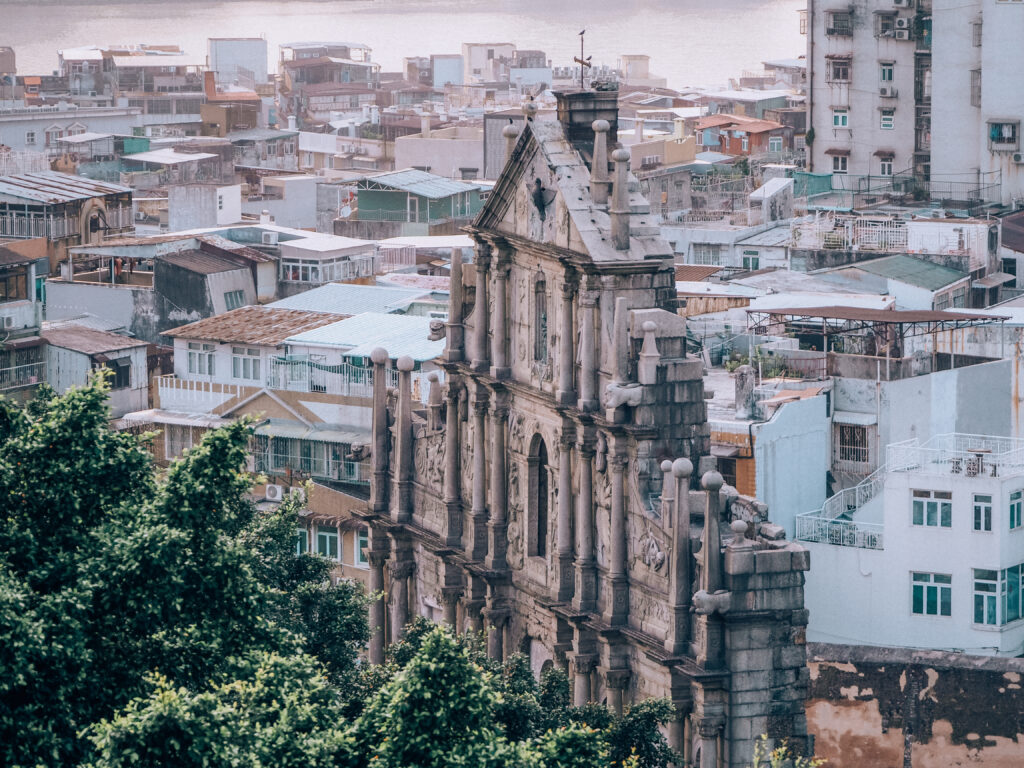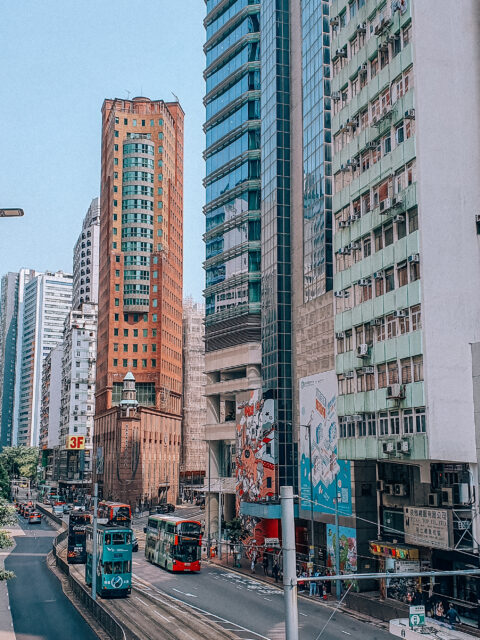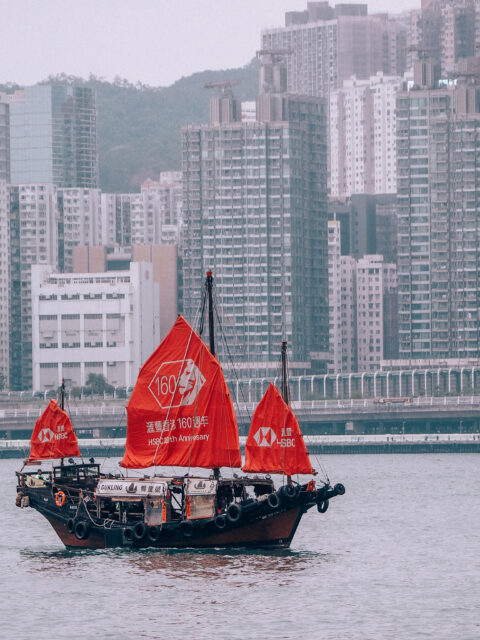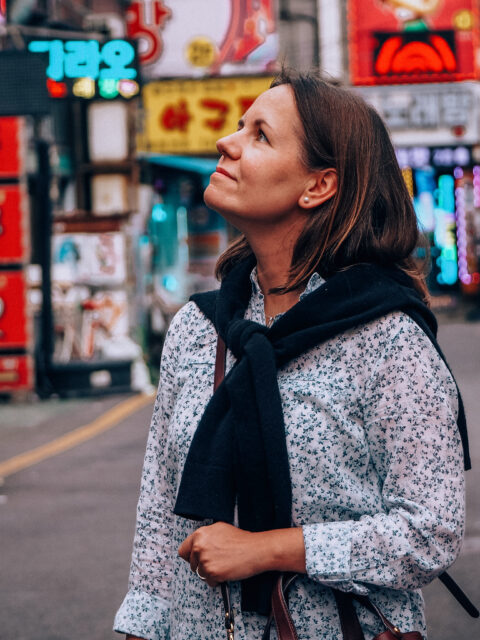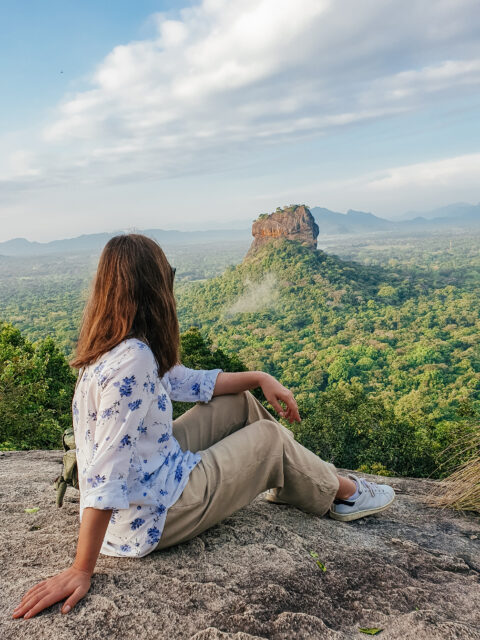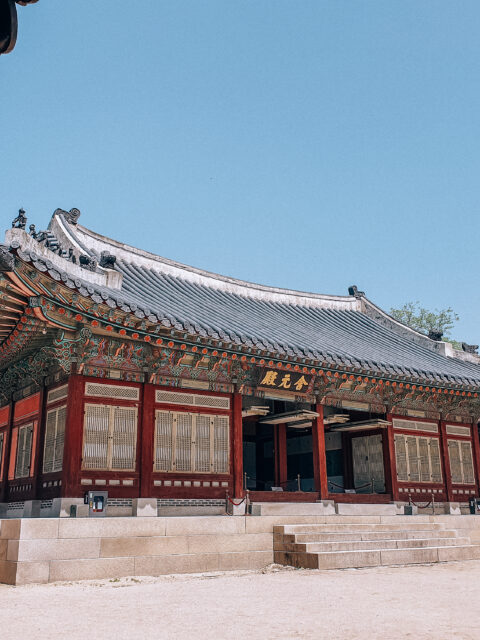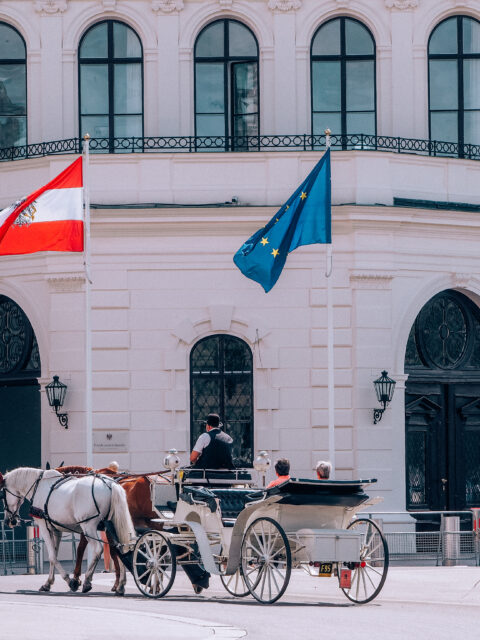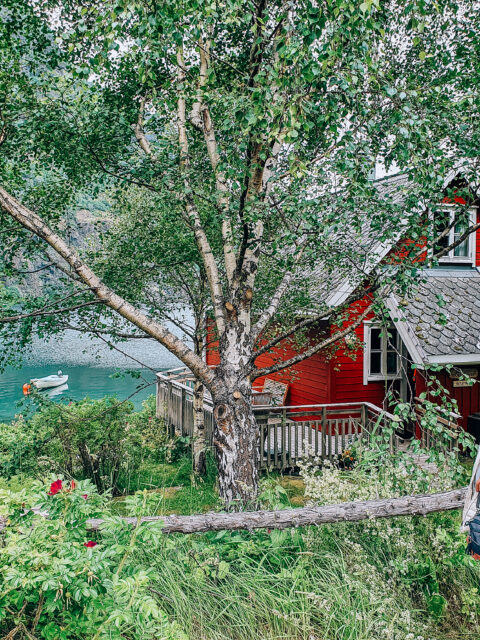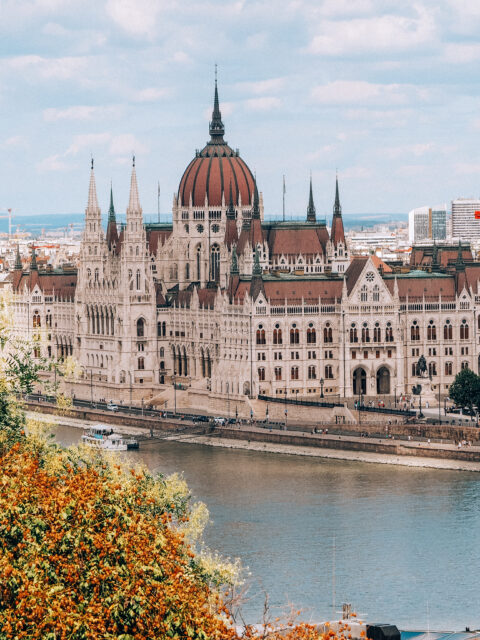If you’re visiting Hong Kong and have a little extra time, spending 1 day in Macau is an easy and rewarding adventure. Just a short ferry or bus ride away, Macau is a fascinating blend of Portuguese colonial charm, glittering modern casinos, centuries-old temples, and mouthwatering street food-all packed into a compact and walkable city.
1 day in Macau: what to see and how to get there from Hong Kong
It is totally doable to visit Macau on a day trip from Hong Kong, but I recommend staying there for a night. Since we had a lot of time in Hong Kong, we decided to do exactly that. We arrived in Macau by noon and departed the next day at 6 pm. This way, we could experience the craziness of the nigh life, lights and busy casinos.
Whether you’re interested in exploring UNESCO-listed ruins, snapping photos of pastel-colored alleyways, or tasting the world-famous egg tarts, Macau has something for every kind of traveler. This guide will help you plan the perfect day trip from Hong Kong to Macau, including how to get there, what to see and do, where to eat, and how to make the most of your time without blowing your budget.

How to get to Macau from Hong Kong
There are a few ways to travel from Hong Kong to Macau, and choosing the best one depends on your budget, time, and comfort preference.
By ferry: The most popular and traditional way is by ferry. TurboJET and Cotai Water Jet both operate regular sailings from Hong Kong Island (Sheung Wan), Kowloon (Tsim Sha Tsui), and the airport directly to Macau. The journey takes about 55 minutes, and boats depart roughly every 15–30 minutes. Fares range from HKD 170 to 200 one way, depending on the class and time of day. I booked by tickets for two people using Klook and got an offer of buy 1 get 1 free.
By bus across the Hong Kong-Zhuhai-Macau Bridge: A newer and more budget-friendly option is to take a cross-border coach across the Hong Kong-Zhuhai-Macau Bridge, the longest sea-crossing bridge in the world. Buses leave from locations like Kowloon Station or Prince Edward and drop you at the Macau Port. The ride takes about 1.5 hours, and tickets cost around HKD 65–80- a great deal if you’re watching your budget. You can book it here.
Border crossing: Remember to bring your passport, as Macau is a separate Special Administrative Region with its own immigration control. Many nationalities (including EU and US passport holders) can enter visa-free.
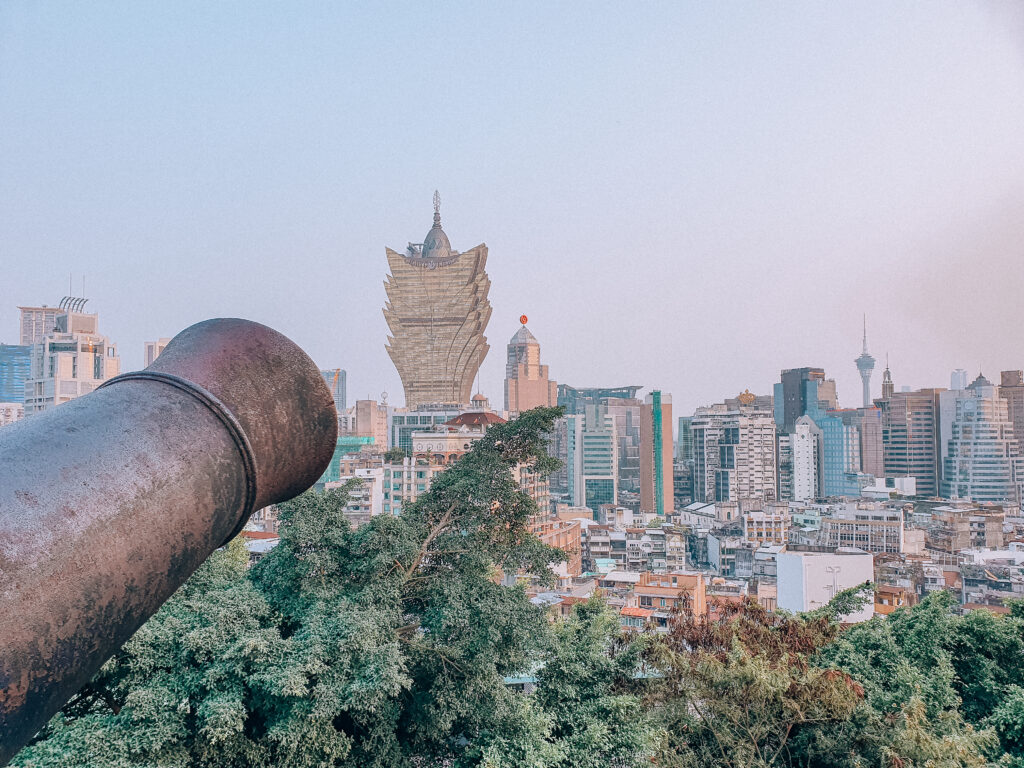
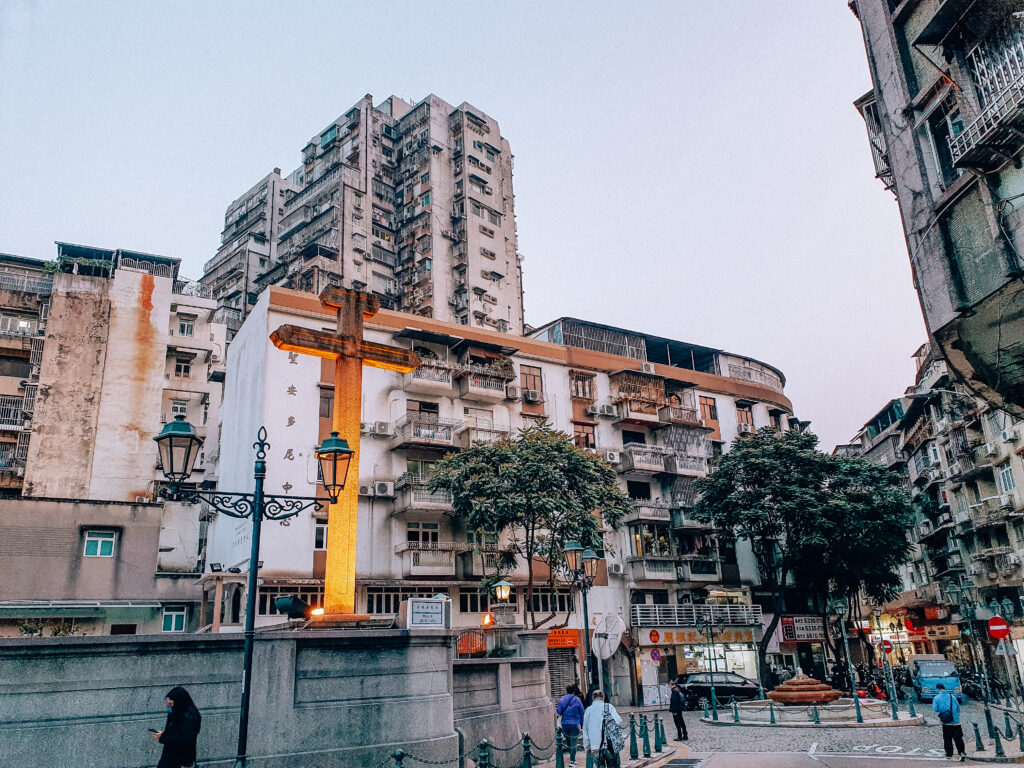
![]()
![]()
When to go to Macau
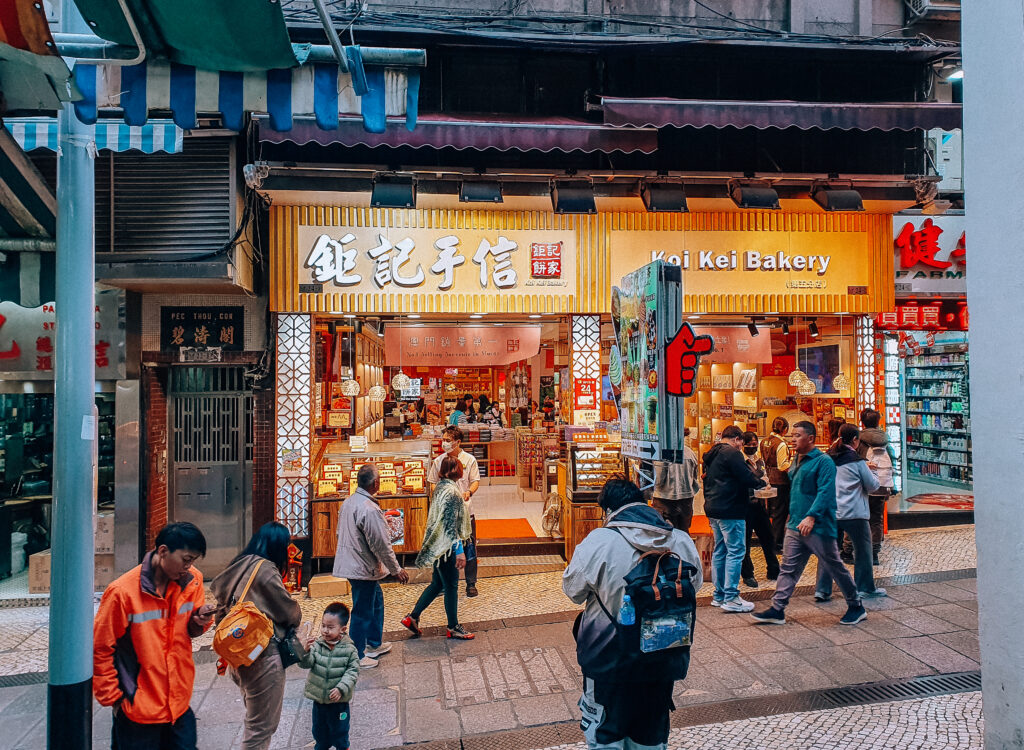
Money in Macau
Macau uses its own currency, the Macanese Pataca (MOP), but Hong Kong Dollars (HKD) are widely accepted almost everywhere at a 1:1 exchange rate. That said, if you pay in HKD, you may receive change in MOP, but use it all while in Macau as Patacas are not accepted back in Hong Kong.
Most major attractions, restaurants, and hotels accept credit cards, but it’s a good idea to carry some cash for smaller eateries, street food stalls, or local shops.
Keep in mind, that while in Hong Kong you can pay the transportation with a credit card, in Macau you need cash. You will be asked to put the cash in a special box inside buses and won’t be given change. Therefore, you need to have small change with you.
ATMs are easy to find throughout the city, and many offer currency exchange services. Just keep in mind that while HKD is convenient for a short visit, using Patacas can help avoid any confusion with change or pricing.
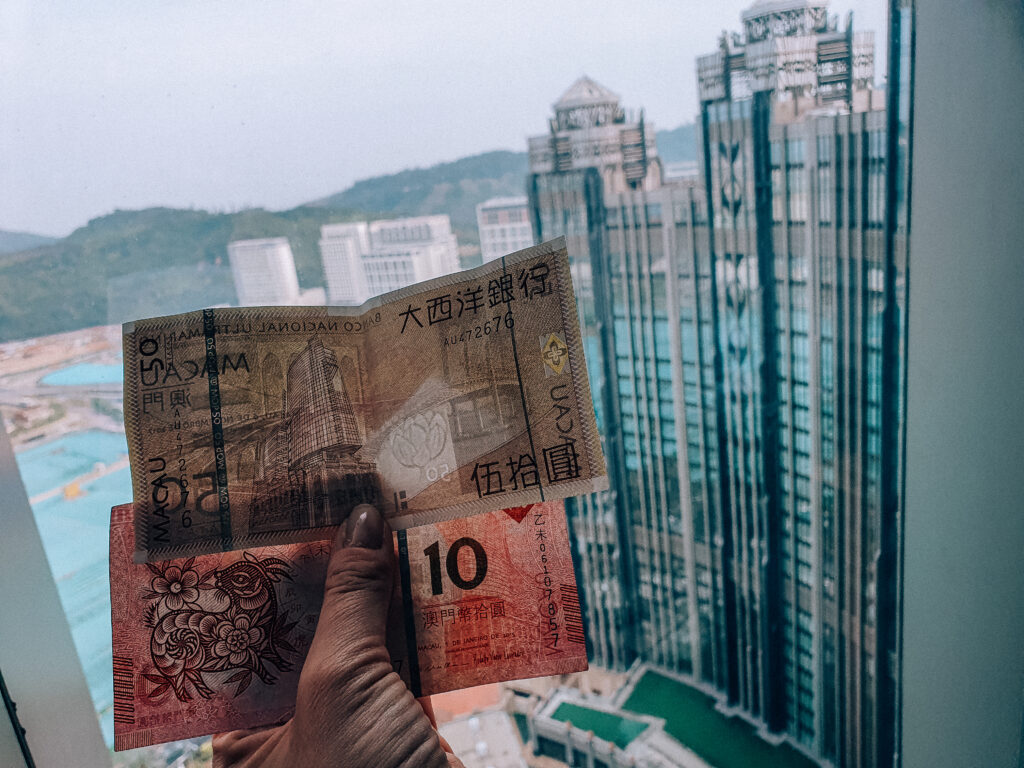
Money saving tips
- Take the bridge bus. If you’re not in a hurry, save money by taking a bus over the Hong Kong-Zhuhai-Macau Bridge instead of the ferry. It’s slower, but significantly cheaper.
- Use free hotel shuttles. Many of Macau’s large hotels offer free shuttle buses from the ferry terminals and border points-even if you’re not a guest. They’re clean, frequent, and a handy way to get around. You can also use them to move between hotels and casinos.
- Avoid weekends if possible. Hotel prices spike on weekends when visitors from mainland China pour in. If you can, plan your trip for Monday to Thursday for better deals and smaller crowds. This is exactly what we did mainly due to wanting avoid the crowds.
- Walk or use public transport. Macau is very walkable, especially around the historic center. For longer distances, public buses are cheap and efficient, and routes are clearly marked in English.
- Combo tickets. Some attractions and museums offer combo entry deals or discounted rates for groups and families. Always ask at the counter!
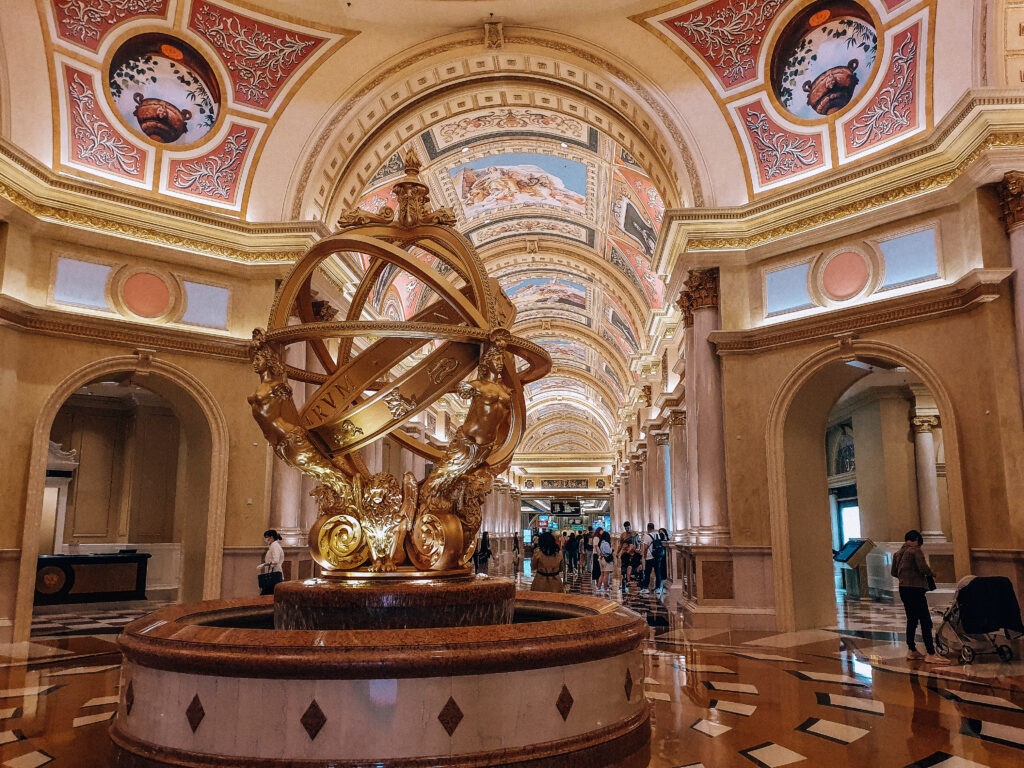
Where to stay in Macao
When deciding where to stay in Macau, you’ll want to choose between the historic Macau Peninsula and the modern Cotai Strip, each offering a distinct experience.
The Macau Peninsula is perfect for culture lovers and first-time visitors-this area is home to charming colonial streets, the iconic Ruins of St. Paul’s, traditional markets, and plenty of authentic local eateries. It’s walkable, atmospheric, and ideal if you want to soak in Macau’s heritage.
In contrast, the Cotai Strip is where you’ll find sprawling luxury resorts, glitzy casinos, shopping malls, and extravagant entertainment-think of it as Macau’s version of Las Vegas. Hotels like The Venetian, Galaxy Macau, or Studio City (this is where we stayed and the room was great and not too expensive) offer over-the-top comfort and plenty to do under one roof.
In my opinion, staying in Cotai Strip is more fun as you are close to all the odd hotels and malls. Besides, it is easy to go to the historic centre by bus and spend a few hours there. The buses are cheap and frequent.
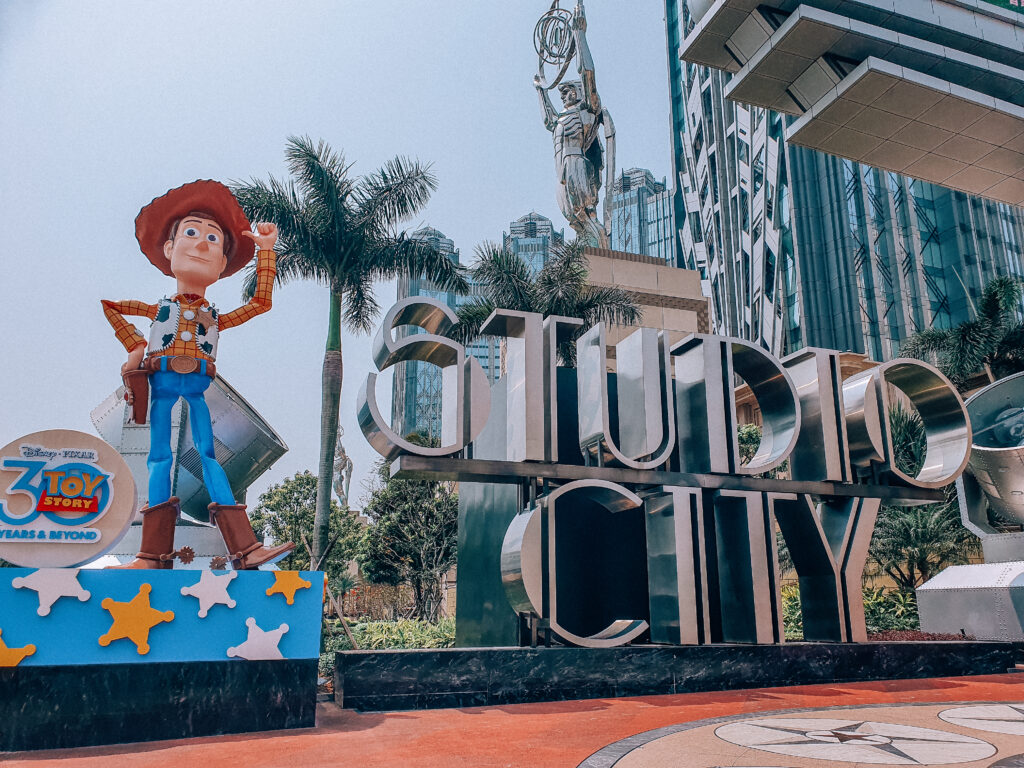
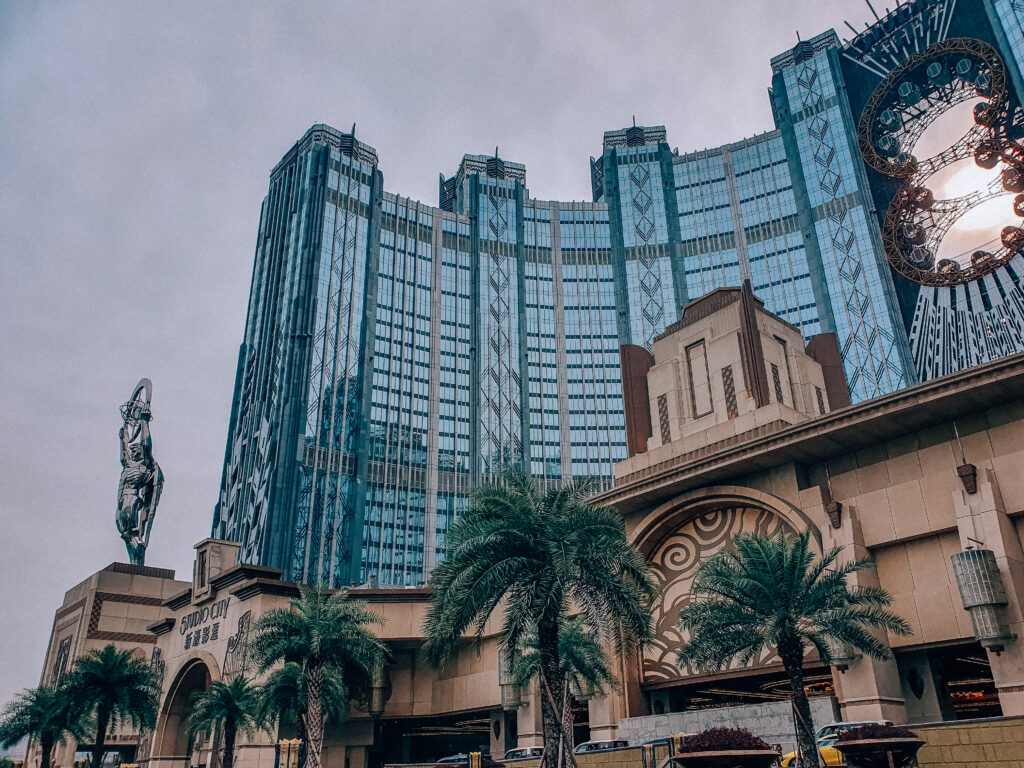
1 day in Macau: what to see and do
Despite its compact size, Macau offers a surprising number of things to do-perfect for a packed day or a short overnight trip. Surprisingly, we did a lot of walking in Macau. Even the malls are so big- almost like villages.
Wander the historic centre of Macau
Start your visit in the UNESCO-listed historic centre, where pastel-colored colonial buildings meet lively local culture. The star is the Ruins of St. Paul’s, the remains of a 17th-century cathedral that’s now an iconic photo spot. Nearby, stroll down Senado Square, paved with wave-patterned tiles and lined with shops and cafés.
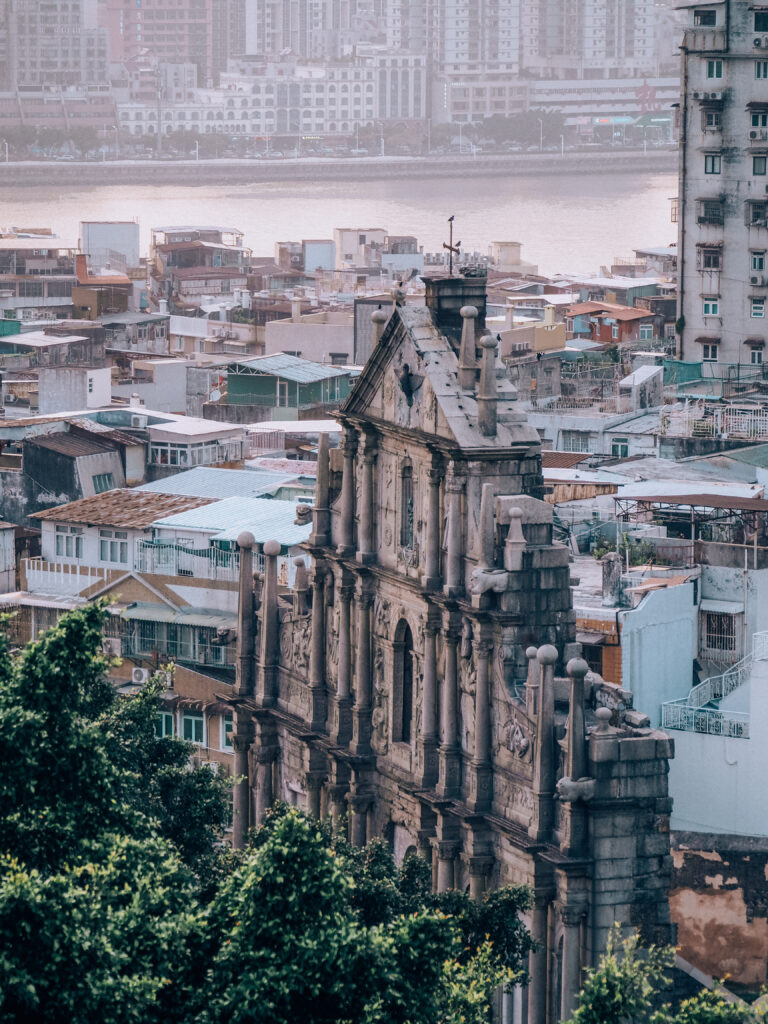
Visit A-Ma Temple
One of Macau’s oldest temples, A-Ma Temple predates the city itself. Dedicated to the sea goddess Mazu, it’s a peaceful place filled with incense coils, granite carvings, and cultural significance.
Try Portuguese egg tarts and street snacks
Macau’s food scene is legendary. Don’t leave without trying a warm Portuguese egg tart (Lord Stow’s Bakery is a popular one), and make room for Macanese cuisine- a fusion of Portuguese, Chinese, and African influences. Dishes like African chicken, pork chop buns, and minchi offer something you won’t find anywhere else.
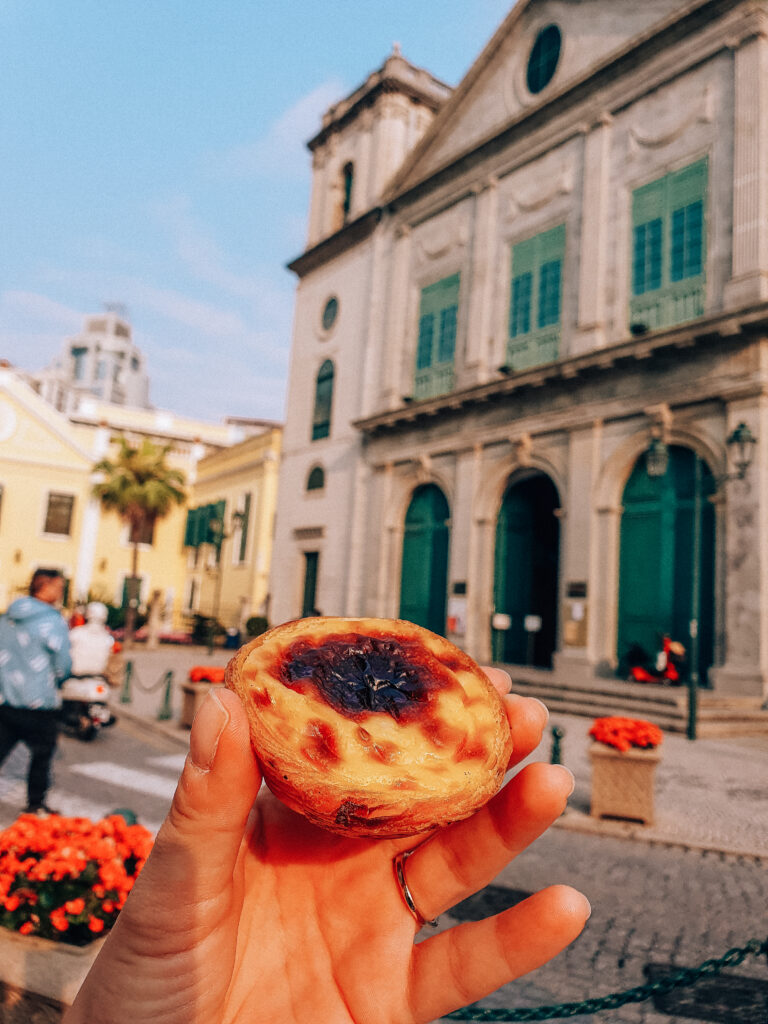
Explore the Cotai Strip
For glitz, head to the Cotai Strip, Macau’s answer to Las Vegas. Even if you’re not into gambling, these mega resorts offer plenty: think indoor canals at The Venetian, rooftop pools, sprawling shopping malls, and world-class shows like The House of Dancing Water. The funny think I discovered there was the Venetian mall and hotel because in Doha, where I live, there is an almost identical mall.
There are a few more themed hotels, like the Parisian or Londoner. We stayed in Studio City mall, which has a few hotels, all with a film theme. It’s an attraction in itself.
Casinos on the other hand, were absolutely crazy. I’m not into this kind of entertainment, so we didn’t even try, but walking around and watching all the crowds immersed in playing was such a sight.
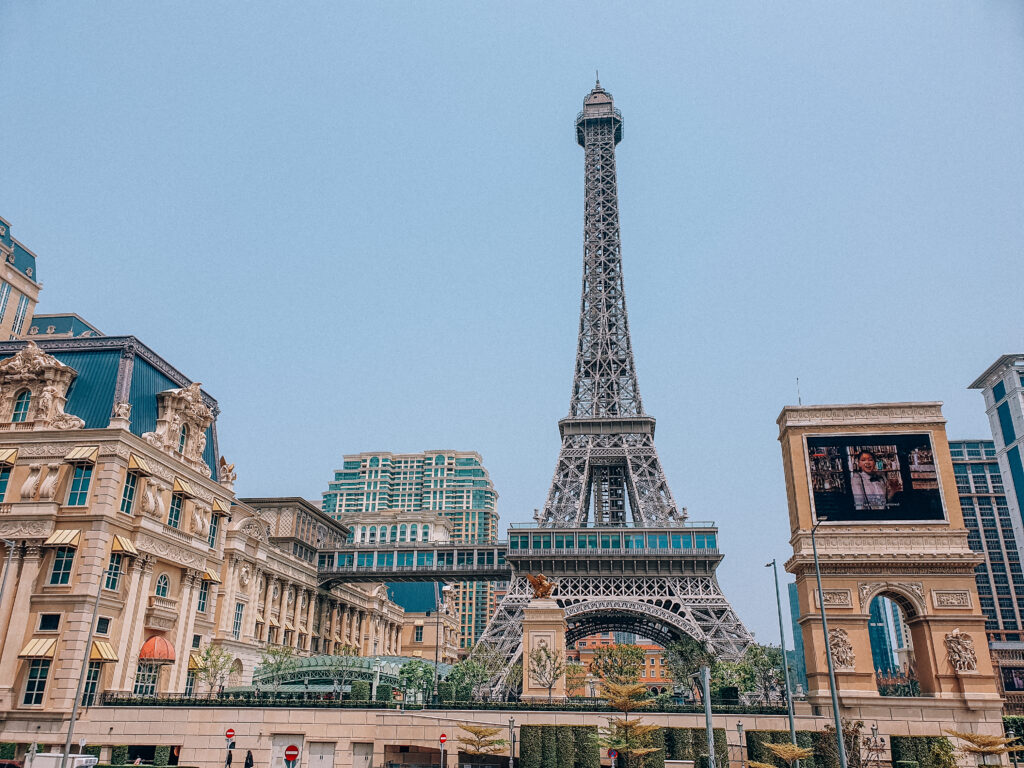
Take a break in Taipa Village
For something more local and relaxed, stroll through Taipa Village, where narrow lanes are dotted with traditional houses, street art, and food stalls. It’s a great contrast to the nearby glamour of Cotai.
Visit gold shops
Similarly to Hong Kong, there are so many gold shops in Macau. And I am not talking about standard jewellery, but huge pieces heavily decorated. It’s truly impressive. You can find anything there made of gold: chess pieces, gold dice, tiaras and anything else you can think of.
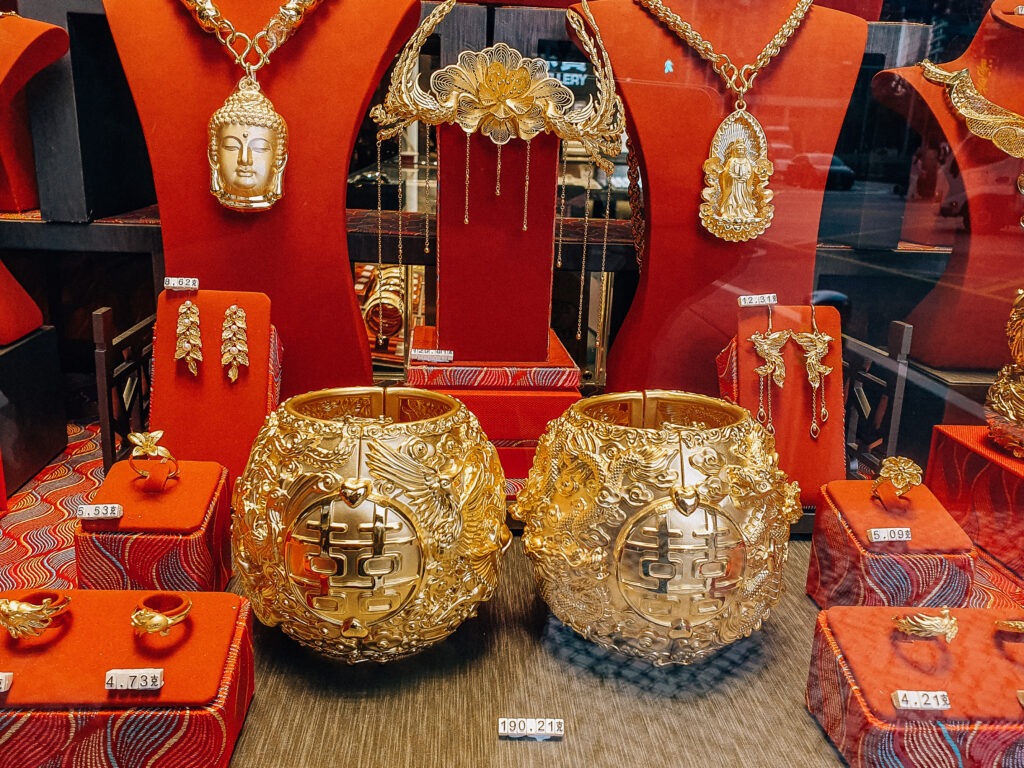
Climb the Macau Tower
Adrenaline junkies can bungee jump off the Macau Tower, while the rest of us can enjoy panoramic views from the observation deck. There’s also a revolving restaurant if you fancy a meal with a view.

Please note that this post included affiliate links, when you decide to purchase anything through these links I get a small commission at NO extra cost to you, it helps me to keep running this blog! I only promote products and services I use or would use myself. All images are the property of Postcards from the World and cannot be used without permission.
See also:
- Best areas to stay in Hong Kong for first timers: breakdown by neighborhood
- 10 cool photo spots in Hong Kong: a perfect place for travellers and photographers
- First time in Hong Kong: all you need to know to plan a stress-free trip.
- 4 days in Seoul for first timers: all you need to know to plan a perfect trip
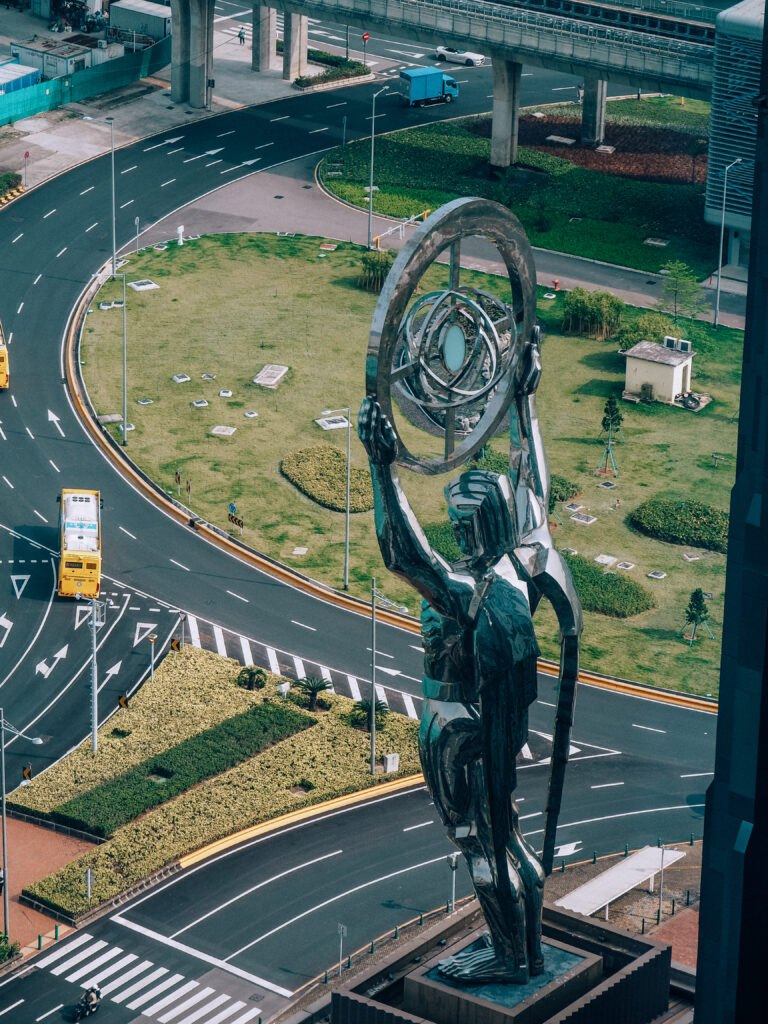
Use my favourite travel resources to plan your dream trips
- Booking.com for searching best prices on accommodation.
- Travel Payouts is my favourite platform for monetizing the blog.
- Discover Cars is a great website as they search both local and international car hire services, so you can choose the best deal for yourself. Make sure though, that the company has a good reputation and reviews.
- Get Your Guide is my place to go for searching and booking tours and excursions, especially when I travel solo.
- World Nomads and EKTA travel insurance. I like them because they have quite extensive coverage of different activities.
- WeGoTrip sends you audio guides to your mobile, so you can visit places while learning history and interesting facts easily and for little money.
- Go City is a perfect site for booking bucket list experiences and attractions all in one to avoid paying for multiple tickets. Easy and saves money. You can even save 50%.
- Trip Advisor– amazing for good quality recommendations.
- Skyscanner is a perfect website for searching flight routes and comparing prices.

Did you like the post? Pint it for later:



